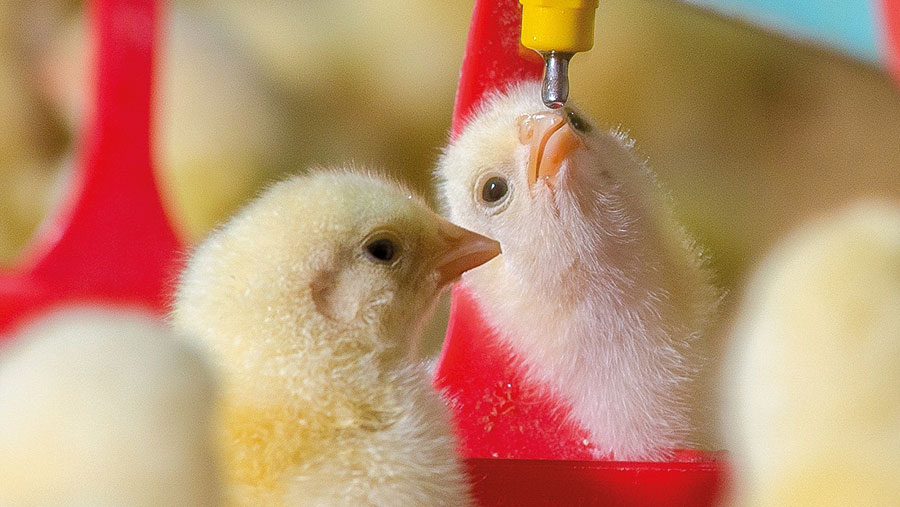Young chick nutrition: Tips to get critical first days right
 © Chayakorn/Adobe Stock
© Chayakorn/Adobe Stock The right nutrition in very young chicks can bring benefits in reduced mortality and better production later in life.
In the past, chicks may have been 47 days of age at slaughter. Today, the average age for slaughter of broilers is 37-39 days, so the first four days make up about 10% of its lifetime.
During this early period, the modern chick’s bodyweight increases by around 190%, so it is make or break in terms of functional development, says Chloe Paine, poultry nutritionist and technical manager at Trouw Nutrition.
See also: From start-up to sector leader – one broiler grower’s story
Some producers are looking to reduce the production cycle even further, to 35 days average.
Every time the complete length of the cycle is shortened – which is more efficient and is definitely the trend in modern genetics – the importance of those first few days only grows.
Gut development
Early development of the intestinal tract can define later performance success.
In commercial broiler operations, chicks can experience delays in accessing feed and water in transit to farm. This can affect the development of the intestinal mucosa, which impairs absorption of nutrients.
There is a significant change between the unhatched chicks relying on nutrients from digesting the yolk sac, hatching and then arriving on farm to consume feed.
As a young chick begins to develop, it has specific mineral metabolism and functional protein needs.
Functional proteins aid digestibility and absorption of feed, and the mineral metabolism promotes skeletal growth required to sustain muscular development.
Strategies to promote feed intake
Producers can implement strategies to ensure there is not a delay in feed intake, and alternatives to traditional hatchery systems have been developed as a solution.
Adequate access and quantity of feed is essential to maximise feed intake – everything needs to be made easy for the chicks, says Ms Paine.
Ways to reduce a delay in feed intake
- Chicks should have immediate access to fresh, clean feed and water from the time they arrive on farm
- Chicks should never have to search for their food
- Feeding space is critical, regardless of the type of feeding system
- Feed distribution and the proximity of the feed to the birds is key
- Cover at least 30% of the brooding area with chick paper
- Chick activity ensures feed and water consumption, which is influenced by the house environment
- Correct litter and ambient temperatures are vital to ensure chick activity and feed intake – heating is important and should begin at least 24-48 hours before placement
- Light uniformity is another important factor during brooding – use light to encourage chick activity and help them locate feed and water
Diet suitability
Pre-starter or starter diets are available on the market, but these are generally based on the needs of chicks between days seven and 10.
Below that age range, the chick’s enzyme production is not optimal, so the digestibility of the first feed – and the inclusion of functional proteins with a calcium and phosphorus mineral strategy – will help to overcome that issue.
Pellet size is also an issue. Most producers would take their normal feed and crumble it for the chicks to make feeding easier and aid digestion.
Research by Trouw has identified that a 2mm micro pellet should be fed to aid intake and digestibility, says Ms Paine.
